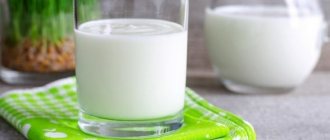Nuts and seeds
Nuts and seeds contain a variety of minerals, but are especially rich in magnesium, zinc, manganese, copper, selenium, and phosphorus (3).
Some nuts and seeds stand out for their mineral content. For example, just one Brazil nut contains 174% of your recommended daily intake (RDI) for selenium, and a 30-gram serving of pumpkin seeds contains 40% of the RDA for magnesium (4, 5).
Whole nuts and seeds make convenient, nutrient-rich snacks, and spreads made from them can be included in smoothies and oatmeal, or can be eaten in combination with fresh fruits or vegetables.
Shellfish
Shellfish, including oysters, clams, and mussels, are concentrated sources of minerals and contain selenium, zinc, copper, and iron (6).
Consuming 6 medium-sized oysters (84 grams) meets your daily requirements for zinc and copper and provides 30% and 22% of the RDA for selenium and iron, respectively (7).
Zinc is a nutrient essential for immune function, DNA production, cell division, and protein production (6).
Pregnant and breastfeeding women, people with gastrointestinal diseases, people taking certain medications, teenagers, and the elderly are populations at risk of zinc deficiency, which can impair the immune response, interfere with growth and development, and increase the risk of infections (8) .
Shellfish are a concentrated source of zinc and are a smart choice for those at risk of becoming deficient in this vital nutrient.
Why take it?
Many biochemical processes occur in our body with the participation of zinc, and if it is not sufficiently sufficient, physiological problems may arise.
The main beneficial properties of zinc:
- Zinc takes part in the breakdown and synthesis of macronutrients: proteins, fats and carbohydrates.
- Regulates the functioning of the immune system: it is part of antibodies, leukocytes and some hormones, in particular male sex hormones.
- Takes direct part in metabolic processes, coordinates the work of the thyroid gland and adrenal glands. According to the results of studies conducted by Japanese scientists, zinc promotes the synthesis of triiodothyronine (T3), a thyroid hormone, and affects the conversion of thyroxine to T3.3
- Plays a vital role in maintaining brain function. A 2009 study by Italian scientists found that zinc supplementation resulted in improvements in neurological symptoms in zinc-deficient stroke patients.4
- Strengthens teeth, nails and hair, improves skin condition.
- Helps in the absorption of vitamins A and E.
- Plays an important role in ensuring male reproductive health - it is involved in the synthesis of testosterone5 and affects the motility, number and viability of sperm6.
Cruciferous vegetables
Eating cruciferous vegetables, such as cauliflower, broccoli, Swiss chard, and Brussels sprouts, is associated with numerous health benefits, including a reduced risk of chronic disease (9).
These beneficial effects are directly related to the high amount of nutrients these vegetables contain, including their impressive concentration of minerals.
Cruciferous vegetables, including broccoli, cabbage, and watercress, are especially rich in sulfur, a mineral essential for cellular function, DNA production, detoxification, and the synthesis of glutathione, a powerful antioxidant produced by your body (10, 11, 12).
In addition to sulfur, cruciferous vegetables are a good source of many other minerals, including magnesium, potassium, manganese, and calcium (13).
Products containing iron
1. White fish, it contains a substance that is easily absorbed by the body. It is recommended to eat tuna and shrimp.
2. Meat products. The most iron is found in veal and beef liver. Small amounts in pork and chicken.
3
Pay attention to vegetables, a large amount of iron in sauerkraut, leafy vegetables - chard, spinach, cauliflower, broccoli, Chinese cabbage
4. The diet should include fruits such as watermelon, it also contains protein, carbohydrates, proteins. Raisins are rich in iron and contain potassium, which is necessary for normal heart function. Iron is also found in prunes, berries such as strawberries, blackberries, and lingonberries.
5. A large amount of iron in bread and cereals. Bran comes first, followed by buckwheat, oatmeal, corn and millet cereals.
6. Nuts and seeds are rich in iron. Almonds, pistachios, hazelnuts, cashews, pine nuts, and walnuts are especially useful. Iron is found in sesame, pumpkin and sunflower seeds.
Please note that iron will be useful only when it is fully absorbed; for this, the diet must contain foods that are rich in vitamin C. In order for plant iron to be fully absorbed, you must eat an animal
The menu should include fish, meat, and cook it with vegetables, which contain iron.
You will have to give up foods that make iron poorly absorbed, because they contain polyphenols, calcium - Coca-Cola, chocolate, grape juice, tea, coffee, dairy, grain products.
You need to be very careful when preparing foods that contain iron so that they do not lose their beneficial substances. So, food products must contain zinc, iron, cobalt - all these substances take part in the formation of the circulatory system, affect reproduction, growth, heredity, with their help you can maintain system organs in normal condition
If a person suffers from a lack of iron in the blood, he will first weaken, then he will develop weakness in the muscles. Subsequently, everything will end in anemia. Therefore, it is imperative to consume enough foods that are rich in iron. There are especially many of them in liver, meat, vegetables, fruits, and seafood. Remember that iron will not be absorbed if the body suffers from a lack of vitamin C; it is he who is responsible for the body to fully absorb a sufficient amount of iron
So, food products must contain zinc, iron, cobalt - all these substances take part in the formation of the circulatory system, affect reproduction, growth, heredity, with their help system organs can be maintained in a normal state. If a person suffers from a lack of iron in the blood, he will first weaken, then he will develop weakness in the muscles. Subsequently, everything will end in anemia. Therefore, it is imperative to consume enough foods that are rich in iron. There are especially many of them in liver, meat, vegetables, fruits, and seafood. Remember that iron will not be absorbed if the body suffers from a lack of vitamin C; it is he who is responsible for the body to fully absorb a sufficient amount of iron.
Eggs
Eggs are often called nature's multivitamins—and for good reason. Whole eggs are rich in nutrients and contain many important minerals.
They're high in iron, phosphorus, zinc, and selenium, as well as high in vitamins, healthy fats, antioxidants, and protein (15).
Although the cholesterol in egg yolks causes many people to avoid eating them, yolks contain almost all the vitamins, minerals, and other beneficial compounds, so it's recommended to eat the whole egg, not just the white (16, 17).
Beans
Beans are known for being rich in fiber and protein, but they are also a rich source of minerals, including calcium, magnesium, iron, phosphorus, potassium, manganese, copper, and zinc (18).
However, beans also contain antinutrients such as phytates, which can reduce nutrient absorption. However, research has shown that properly preparing and cooking beans, either by sprouting or soaking and boiling, can help increase the bioavailability of minerals (19, 20, 21).
Daily value of zinc for different ages
According to WHO (World Health Organization) recommendations, the nominal daily intakes of zinc for humans are as follows:
- up to 6 months - 2 mg per day;
- from 7 months to 3 years - 3 mg per day;
- from 4 to 8 years - 5 mg per day;
- from 9 to 13 years - 8 mg per day;
- from 14 to 18 years old - 11 mg per day for boys, 9 mg per day for girls;
- from 19 years and older - from 11 to 14 mg per day;
- during pregnancy and lactation (breastfeeding) - from 12 to 14 mg per day.
And it is necessary to take into account that zinc is a microelement that does not accumulate in the body. That is, you need to always include foods that contain a lot of it in your daily diet.
And for the normal absorption of zinc, vitamins A, E, P, C, iodine, calcium, and magnesium are needed.
Cocoa
Drinking hot chocolate, adding cocoa to a smoothie, or chewing a piece of dark chocolate are good ways to increase your mineral intake.
Although cocoa products are not often associated with nutrient-rich foods, they actually contain many minerals. Cocoa and cocoa products are especially rich in magnesium and copper (22).
Magnesium is essential for energy production, blood pressure regulation, nerve function, blood sugar control, and more (22).
Copper is essential for proper growth and development, carbohydrate metabolism, iron absorption and red blood cell formation, as well as many other important processes in the body (22).
Iodine
The main function of iodine is to ensure the synthesis of the thyroid hormone called thyroxine. In addition, iodine is actively involved in the creation of phagocytes, which are a kind of “patrol” cells that destroy debris and all kinds of foreign bodies directly in the cells.
Benefits of iodine
- Normalization of the endocrine system by regulating the functions of the thyroid gland, as well as the pituitary gland.
- Ensuring metabolic processes.
- Promoting normal physical and mental development (especially in children).
- Prevention of accumulation of radioactive iodine, which provides reliable protection against radiation exposure.
- Strengthening the immune system.
- Normalization of the nervous system.
- Regulation of the cardiovascular, reproductive, and musculoskeletal systems.
- Stabilization of hormonal levels.
Important! Iodine in its pure form that enters the body is almost not absorbed, and significant doses of it can provoke severe poisoning: for example, the lethal dose of pure iodine for humans is about 3 g (it is impossible to obtain such a dose with food fortified with iodine). Excess iodine has the following consequences:
Excess iodine has the following consequences:
- the development of hyperthyroidism, one of the manifestations of which is Graves’ disease with goiter;
- increased irritability;
- tachycardia;
- muscle weakness;
- sweating;
- sudden weight loss;
- tendency to diarrhea.
Iodine deficiency leads to the following disorders:
- diseases of the nervous system;
- growth retardation and development of dementia in children;
- diseases of the thyroid gland;
- increased risk of developing cancer;
- increased cholesterol;
- congenital malformations;
- miscarriage in women and sterility in men;
- decrease in heart rate.
Iodine enters the human body with food, water and air, so people who permanently live near the sea rarely experience iodine deficiency, especially if they include iodine-containing foods in their diet.
What foods contain iodine?
The daily requirement of iodine is 2 - 4 mcg per kilogram of body weight.
Golden Rule!
The less iodine is present in the environment, the more foods rich in this microelement need to be introduced into the diet.
Iodine-containing products:
- sea salt;
- green vegetables;
- table iodized salt;
- ocean and sea fish;
- seafood, including seaweed and seaweed;
- onion;
- garlic;
- pineapples;
- eggs;
- Cod liver;
- oriental spices (especially ginger, pepper, coriander, as well as cumin, cloves and turmeric);
- turnip;
- asparagus;
- carrot;
- cabbage of different varieties;
- potato;
- tomatoes;
- beans;
- cereals;
- grape;
- strawberry;
- beet.
Avocado
Avocado is a fruit rich in healthy fats, fiber, vitamins and minerals. It is especially rich in magnesium, potassium, manganese, and copper (23).
Potassium is a mineral that is essential for regulating blood pressure and heart health. Research has shown that diets high in potassium-rich foods such as avocados may help reduce the risk of heart disease and stroke.
A review of 33 studies involving 128,644 people found that higher potassium intake was associated with a 24% reduction in the risk of stroke and a reduction in cardiovascular risk factors such as high blood pressure (24).
Berries
Berries, including strawberries, blueberries, blackberries and raspberries, are not only delicious, but also an excellent source of important minerals.
Berries are a good source of potassium, magnesium and manganese. Manganese is a mineral that is essential for a number of metabolic functions involved in energy metabolism, as well as immune and nervous system functions (25).
This mineral is also essential for the growth and maintenance of healthy bones and connective tissue, as well as for the creation of antioxidants that help protect cells from oxidative damage (26).
Microelements
Microelements are substances that are present in extremely small quantities in the body. Despite this, their role in the full functioning of human systems and organs can hardly be overestimated, because they take an active part in all biochemical processes.
Conventionally, microelements are divided into essential (or vital) and conditionally essential (that is, those whose biological function is known, but the phenomenon of their deficiency is not observed or occurs extremely rarely).
The essential ones include:
- iron (or Fe, according to the periodic table);
- copper (or Cu);
- iodine (or I);
- zinc (or Zn);
- cobalt (or Co);
- chromium (or Cr);
- molybdenum (or Mo);
- selenium (or Se);
- manganese (or Mn).
Conditionally essential include:
- boron (or B);
- bromine (or Br);
- fluorine (or F);
- lithium (or Li);
- nickel (or Ni);
- silicon (or Si);
- vanadium (or V).
Benefits of microelements
- Ensuring metabolism.
- Synthesis of enzymes, vitamins and hormones.
- Stabilization of cell membranes.
- Strengthening the immune system.
- Participation in the processes of hematopoiesis and growth.
- Regulation of the reproductive system.
- Ensuring tissue respiration.
- Ensuring constant osmotic pressure.
- Regulation and restoration of acid-base balance.
- Promoting bone formation.
Important! Any imbalance (both deficiency and excess) of the content of microelements in the body leads to the development of a number of diseases, syndromes or pathological conditions, which are united under the term “microelementosis”. According to studies, approximately 80 percent of the population has a more or less pronounced micronutrient imbalance
Manifestations of micronutrient imbalance:
- weakened immunity, which can lead to frequent colds;
- disturbances in the functioning of the endocrine, cardiac and nervous systems;
- development of psychoneurological disorders;
- tumor formation;
- acne;
- development of inflammation;
- deterioration of the condition of nails and hair;
- development of skin allergies.
Causes of micronutrient imbalance:
- stress;
- radiation;
- unbalanced or monotonous diet;
- polluted atmosphere;
- poor quality drinking water;
- taking certain medications that lead to the binding or loss of trace elements.
Conclusion!
To live happily ever after, you must:
- spend more time in the fresh air (the key word is “fresh”);
- be less nervous;
- drink purified water;
- Eat right, including foods enriched with microelements in your diet.
What foods contain microelements?
The recommended daily intake of microelements for an adult is 150 – 200 mg.
Most microelements enter the human body with food of plant origin, while their content in dairy products and meat is not very high.
Interesting fact!
There are 22 microelements in cow's milk, but their concentration is extremely low, so this product cannot fully compensate for the deficiency of microelements.
In general, each microelement has its own sources of “replenishment,” which we will discuss in more detail later.
Yogurt and cheese
Dairy products, including yogurt and cheese, are among the most common sources of calcium in the diet. Calcium is essential for maintaining a healthy skeletal system and is essential for your nervous system and heart health (27).
Research shows that many people—especially older adults—don't consume enough calcium (28).
Including high-quality dairy products such as yogurt and cheese in your diet is a good way to increase your calcium intake, as well as other minerals such as potassium, phosphorus, zinc and selenium (29).
However, many people do not tolerate dairy products well. If you can't eat dairy, you can get calcium from many other foods, such as beans, nuts, and green leafy vegetables.
What foods contain zinc?
Zinc can be obtained from both plant and animal products. Among the vegetables worth noting are carrots, broccoli, green onions and cauliflower. It is enough to add a portion of fresh salad dressed with olive oil to your main meals.
Fruits that are high in zinc include avocados, apples, pears and citrus fruits. It is useful to diversify your diet with dried fruits and berries, from which, in addition to minerals, the body will receive the entire range of necessary vitamins. Walnuts and pine nuts, pumpkin and sunflower seeds are rich in zinc.
Eating cereals and legumes will help you gain a large proportion of this microelement. It is best if the grains are unprocessed, because grinding them significantly reduces the zinc content. These include brown rice, buckwheat, oatmeal, barley, lentils, peas and beans.
Zinc is best absorbed from meat and animal proteins. Vegetables are not an ideal source because they contain phytates, compounds that prevent the absorption of zinc.7
Some of the record holders for zinc content among animal products are mussels, beef, liver and poultry.8
To preserve the beneficial properties of zinc, it is recommended to stew or cook meat in a double boiler.
Vegetarians should pay attention to the following products:
- Mushrooms
It is an excellent plant source of iron. They are very nutritious and also have a beneficial effect on the immune system. For example, half a cup of shiitake mushrooms contains 0.96 mg of zinc. An excellent solution for those on a plant-based diet.
- Cashew nuts
These nuts are versatile and can be added to sweet and savory dishes. However, watch the serving size as they are quite high in calories. One handful of cashew nuts contains 2.31 mg of zinc.
- Asparagus
Asparagus is known to have antioxidant properties due to the presence of saponins such as asparanine A. It is also an excellent source of vitamin C, beta-carotene and vitamin E, and cellular inulin. A 1-cup serving of asparagus contains 1.08 mg of zinc.
- Spinach
When purchasing spinach, pay attention to the color of the leaves - brighter leaves contain higher concentrations of vitamins. Spinach is also a good source of iron and vitamin C. Eat it raw or blanched, and it also makes a great addition to your daily smoothies. A 1-cup serving of spinach contains 1.37 mg of zinc.
Other sources of zinc
- Fish: cod, tuna, flounder, hake;
- Dairy products: milk, cottage cheese, hard cheese;
- Eggs;
- Offal: heart and beef tongue.
Spirulina
Spirulina is a blue-green algae that is sold in powder form and can be added to drinks such as smoothies, as well as meals such as yogurt and oatmeal.
It is rich in minerals such as iron, magnesium, potassium, copper, and manganese, and consuming it can provide many benefits to your health (31).
For example, research shows that consuming spirulina may help reduce risk factors for heart disease, including high levels of LDL (bad) cholesterol. Additionally, it may help reduce blood sugar levels and signs of inflammation (32, 33).
Ancient grains
Eating ancient grains, including amaranth, millet, quinoa and sorghum, has many health benefits.
Unlike refined grains, ancient grains are rich in a number of important nutrients, including magnesium, potassium, phosphorus, zinc, manganese, and copper (34, 35).
Replacing refined grains and grain products such as white rice, pasta and white bread with ancient grains and grain-based products can significantly increase your mineral intake.
Starchy vegetables
Starchy vegetables such as sweet potatoes, potatoes and parsnips are a great alternative to refined carbohydrates such as white rice and pasta. Starchy vegetables are highly nutritious and contain fiber, as well as antioxidants, vitamins, and minerals (36, 37).
Many people avoid starchy vegetables due to their high carbohydrate content. However, starchy vegetables are an important source of nutrients, including minerals such as potassium, magnesium, manganese, calcium, iron, and copper (38).
Tropical fruits
Tropical fruits grow in tropical or subtropical climates. These include bananas, mango, pineapple, passion fruit, guava, and jackfruit (39).
In addition to being rich in antioxidants, fiber, and vitamins, tropical fruits are also excellent sources of minerals such as potassium, manganese, copper, and magnesium (40).
Bananas, which are one of the most popular tropical fruits, contain many minerals, including potassium, magnesium, and manganese (41).
Try adding frozen tropical fruit to your smoothies, or enjoy fresh tropical fruit by adding it to oatmeal, yogurt, or salads. This will help increase your intake of minerals, as well as vitamins, fiber and antioxidants.
Green leafy vegetables
Green leafy vegetables, including spinach, kale, beet tops, arugula, endive, watercress and lettuce, are some of the healthiest foods you can eat.
Not only are they rich in health-promoting minerals, including magnesium, potassium, calcium, iron, manganese, and copper, but they are also associated with a reduced risk of disease (42).
Consumption of green leafy vegetables has been associated with a reduced risk of cardiovascular disease, some types of cancer, diabetes, and death from all causes (43, 44, 45).
The best part is that green leafy vegetables can be enjoyed in many different ways. Try adding some kale to your smoothies, sautéing beet greens with eggs, or adding leafy greens to salads.
Forms of zinc
There are a wide variety of forms of zinc, varying in degree of bioavailability (digestibility). Today, only the best forms of zinc are used for medical purposes. Among them: sulfate, oxide, glycinate, gluconate, picolinate, chelate, acetate and citrate. Let's take a closer look at these forms of zinc and their absorption:
- Zinc sulfate. Water-soluble form of the trace element. It takes longer and is most often used for the production of drugs and vitamin complexes (including due to its low cost), but has low bioavailability (only 48%). In addition, it negatively affects the gastrointestinal tract and can cause vomiting, heartburn, diarrhea, and abdominal pain. Toxic. It is not recommended to take medications containing zinc sulfate orally without a doctor's prescription.
- Zinc oxide. Just like sulfate, it is the cheapest and most common form of zinc in pharmacology. It is also used in the production of dietary supplements, but is mainly found in ointments, powders, pastes and liniments (as it is characterized by low digestibility - only 48%). Less toxic than sulfate, but in overdose can cause the same side effects as sulfate.
- Zinc glycinate. Chelated form of a trace element (that is, associated with an amino acid, in this case glycine). The organic compound is characterized by high bioavailability (54%), is easily absorbed by the body, does not irritate the mucous membranes of the gastrointestinal tract, and is less likely to cause side effects. An example of a drug is Zinc Glycinate from NOW Foods
- Zinc monomethionine. A chelate compound that combines the mineral with the amino acid methionine. It is often used in the production of lozenges for the prevention of colds and dietary supplements to compensate for zinc deficiency. It is absorbed slightly better than glycinate (58%).
- Zinc acetate. Also known as zinc salt dihydrate. It is well absorbed (60.9%), used mainly for the production of cold medicines and dietary supplements with zinc, and is included in many ointments for the treatment of acne.
- Zinc gluconate. One of the most popular forms of zinc. Successfully combines good digestibility (60.9%), safety and relatively low cost. In pharmacology, it is used both as part of tablets and lozenges for the treatment and prevention of colds, nasal sprays, various ointments, and in the production of vitamin and mineral supplements. An example of a drug is Zinc 50 mg from NOW Foods
- Zinc picolinate. Organic compound with picolinic acid. One of the best forms of the microelement, it is characterized by high biavailability (60.9%) and safety. This form is most often recommended for pregnant women, the elderly and patients with severe zinc deficiency. An example of a drug is Zinc 50 mg from NOW Foods
- Zinc citrate. Organic compound with citric acid. It is characterized by maximum digestibility (61%) and the most pleasant taste. Easily tolerated and does not cause side effects.
The name Zinc Chelate can hide any of its organic compounds with amino acids (glycinate, gluconate, picolinate and others). All of them are safe and have high bioavailability (on average 60.9%). That is why chelated compounds are called the best forms of zinc and are recommended for use in most cases. Examples of drugs - Chelated Zinc from 21st Century
,
Nature's Plus Zinc 10 mg / Zinc 10 mg 90 tablets
There are other forms of zinc (glycerate, sulfide, orotate, etc.) also used in the production of pharmaceutical drugs, but they are less common, so we will not consider them today.
Summarize
- Minerals are vital to your health, and maintaining optimal mineral levels is essential to feeling your best. However, many people do not get enough minerals from their diet.
- However, increasing your mineral intake is easy because many foods, including the nutrient-dense foods listed above, contain large amounts of different minerals.
- To increase your mineral intake, reduce your risk of disease, and improve overall diet quality, try incorporating some or all of the foods on this list into your diet.
Minerals
Food or supplements?
How to take zinc correctly How to take zinc correctly
First of all, you need to try to increase the proportion of zinc-rich foods in your diet. These are eggs, nuts, legumes, spinach. But here you need to remember that only about 30% of the zinc it contains is absorbed from food. Therefore, you should not ignore specialized supplements.
In the catalog of our online store you will find zinc-containing complexes from well-known and respected brands that guarantee the quality of their products. This means that the actual composition of their additives exactly corresponds to the declared concentrations. And compliance with the recommended dosages is one of the most important rules for taking any supplements!










